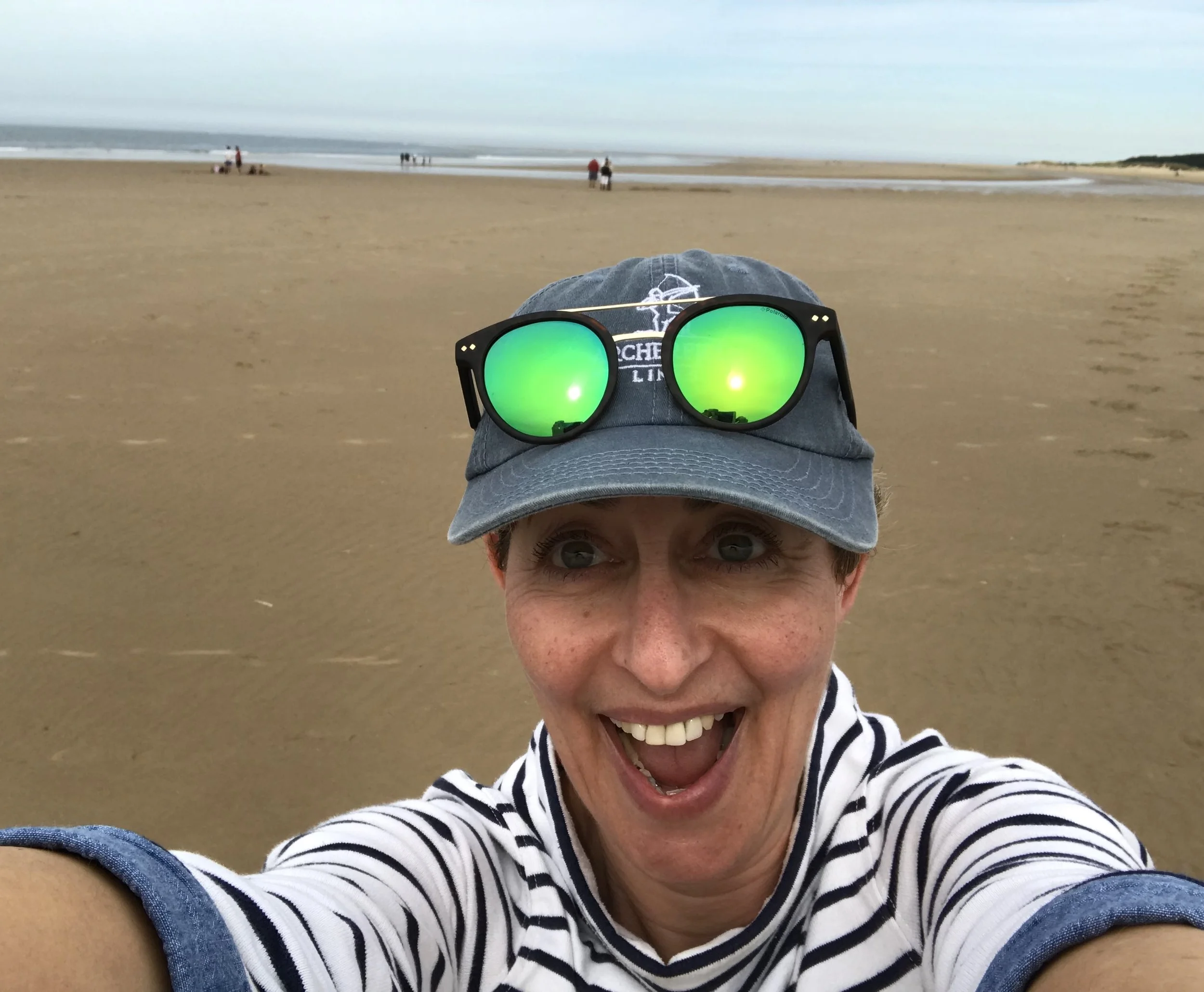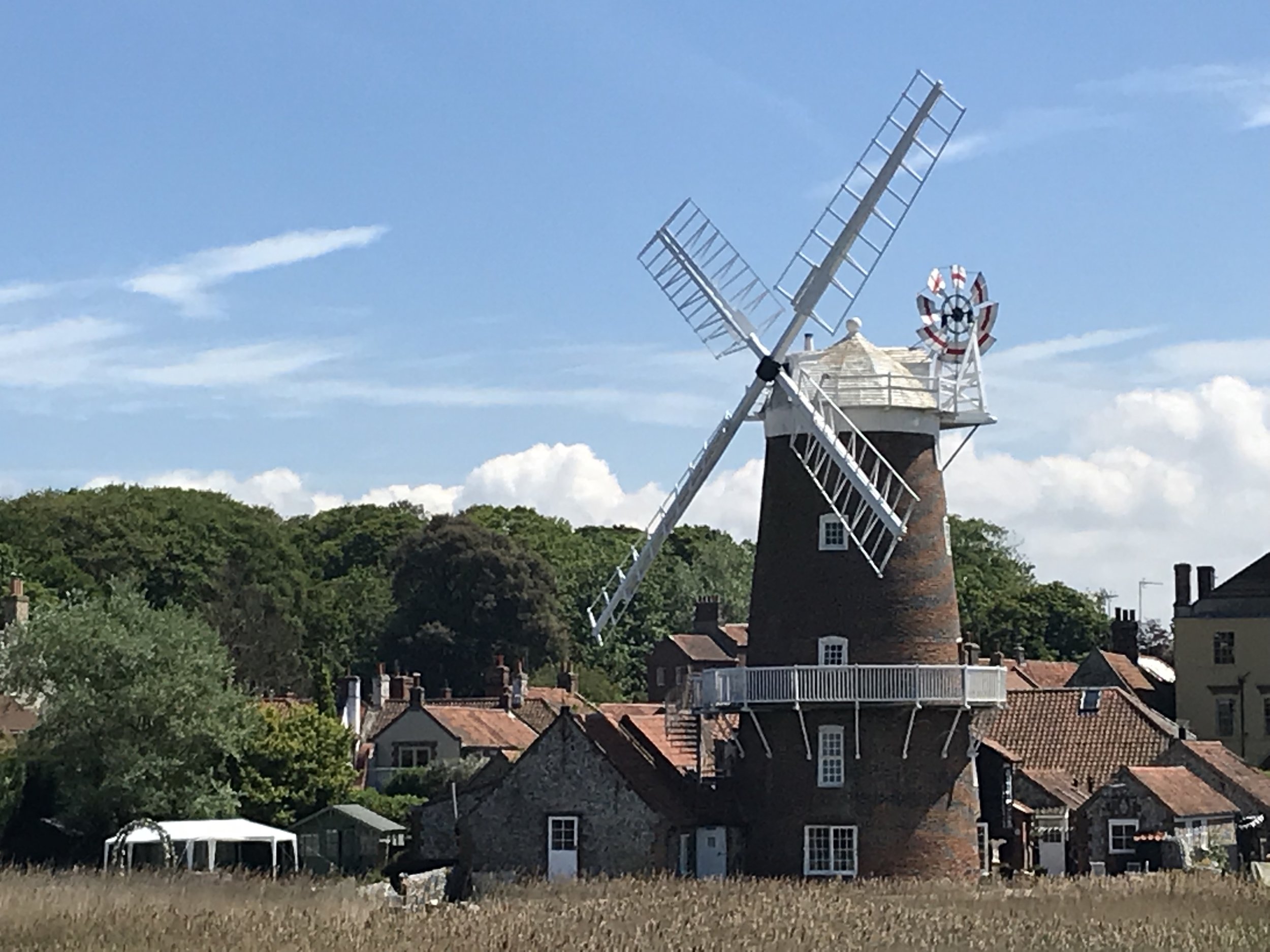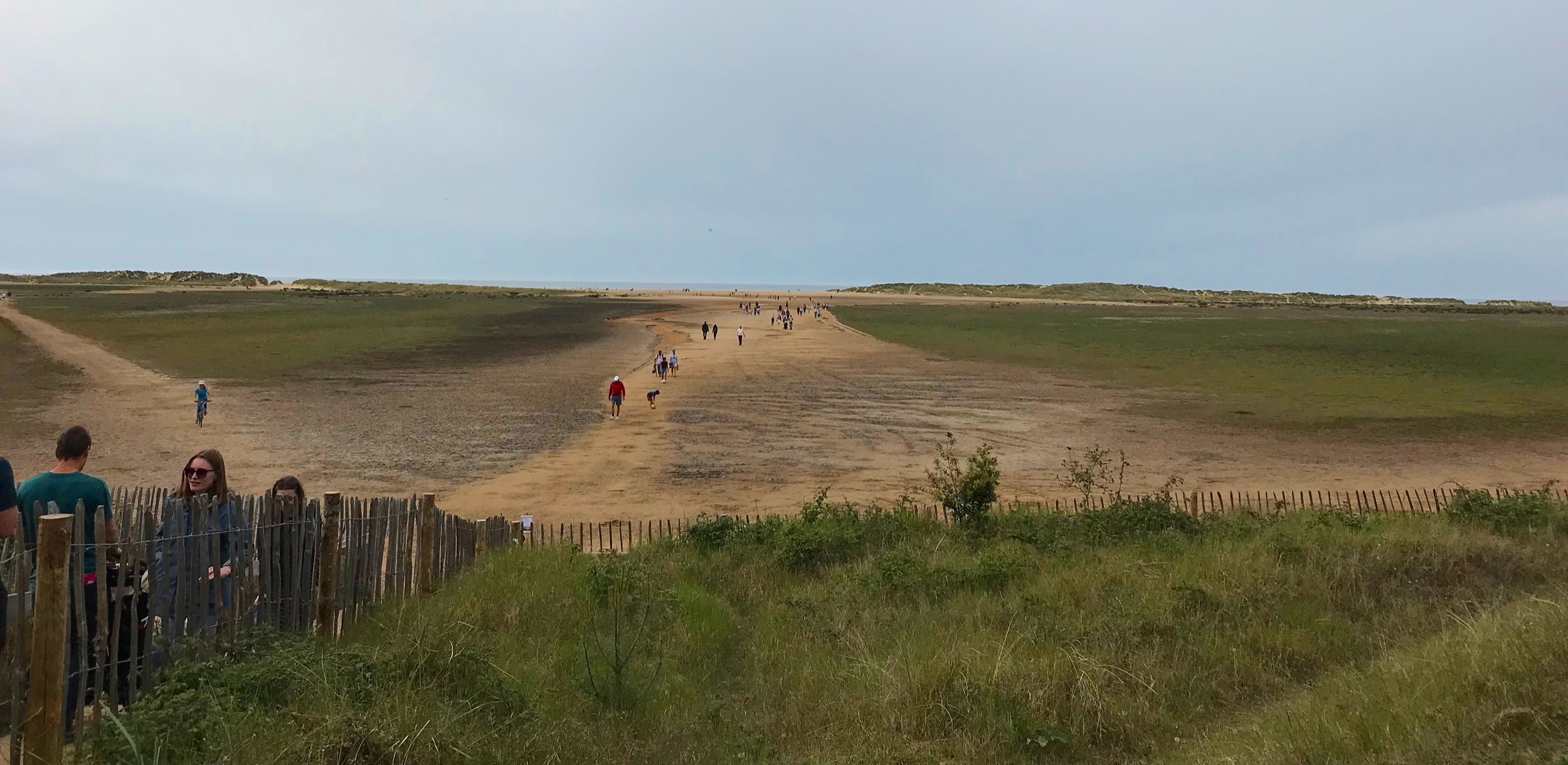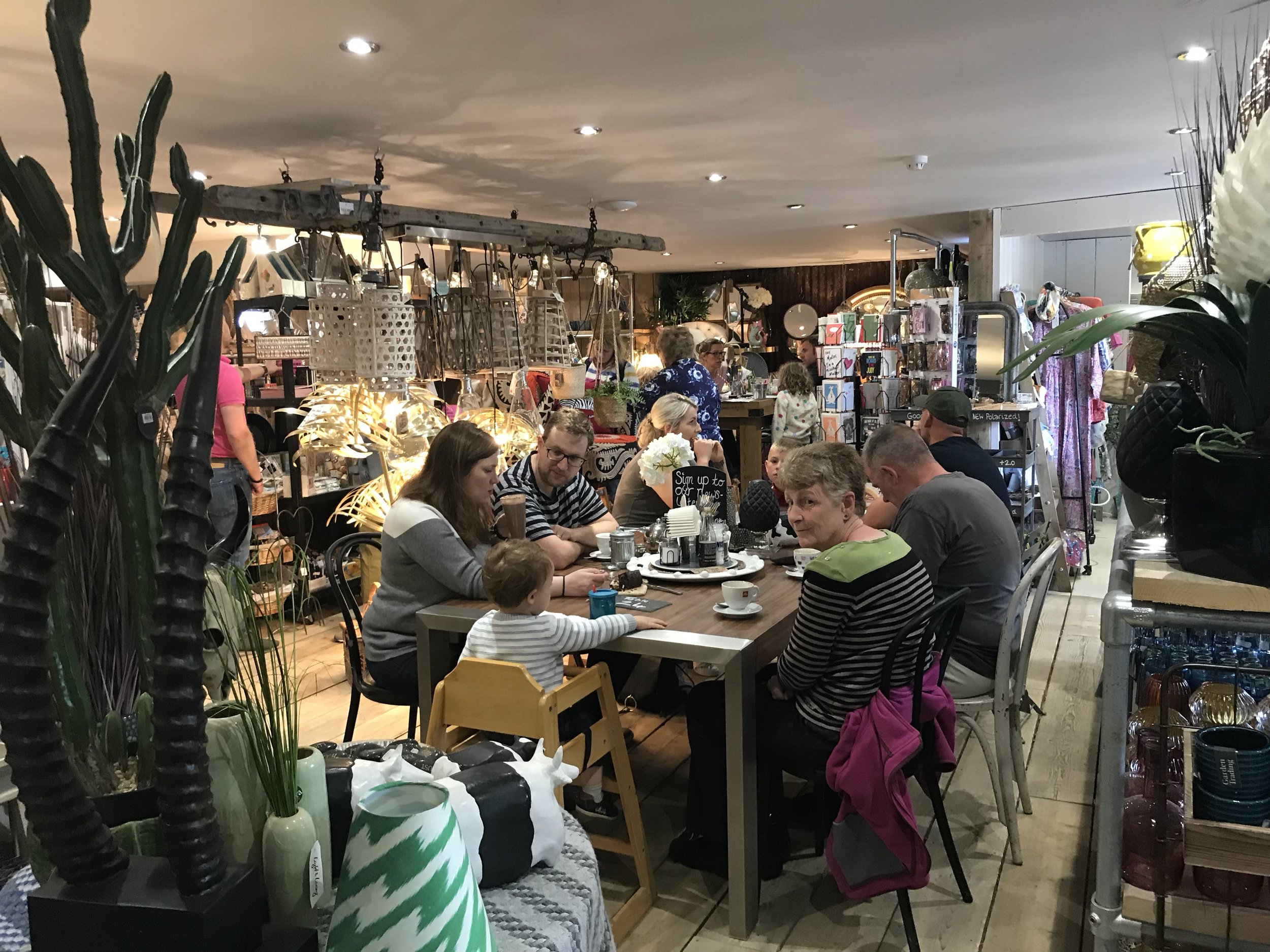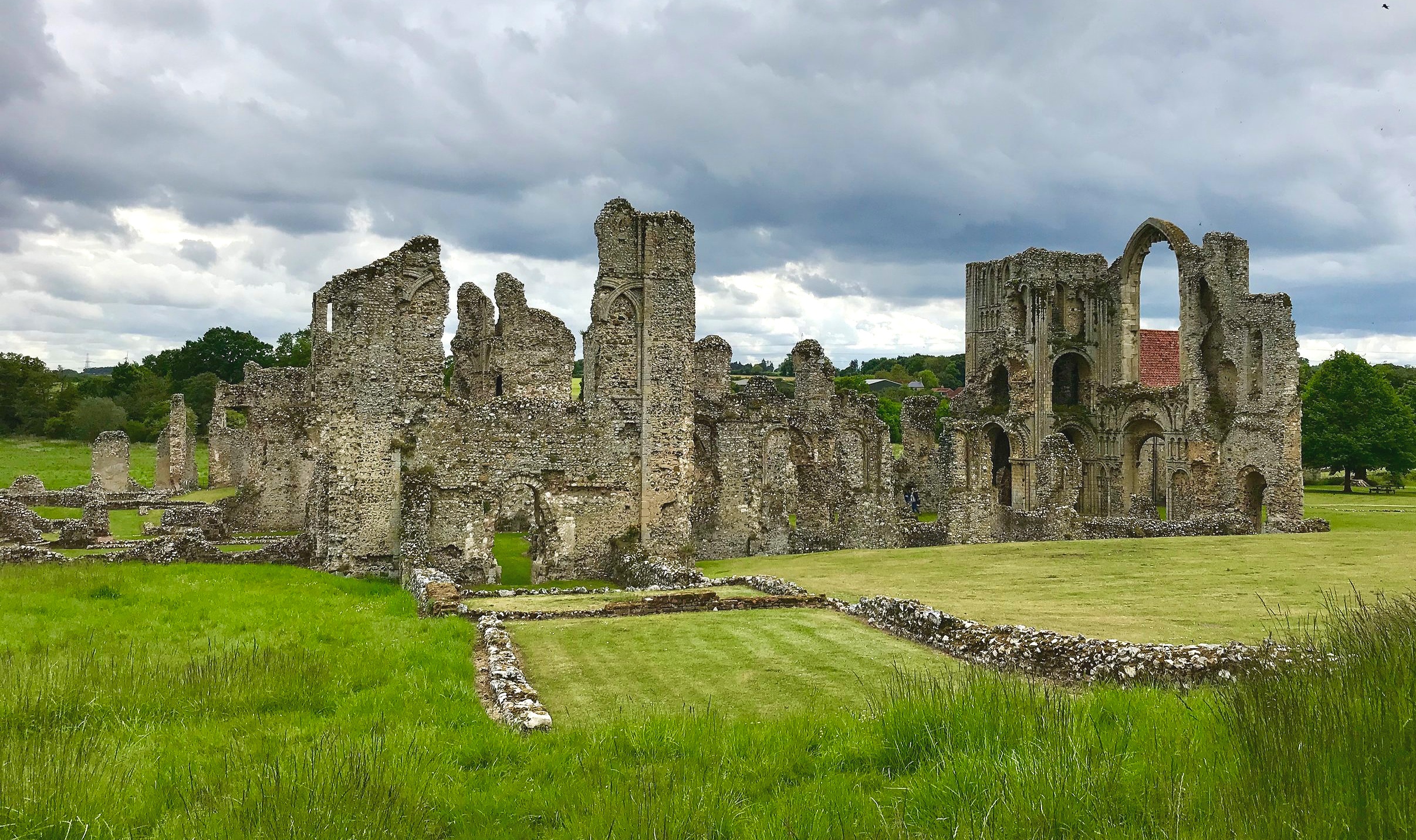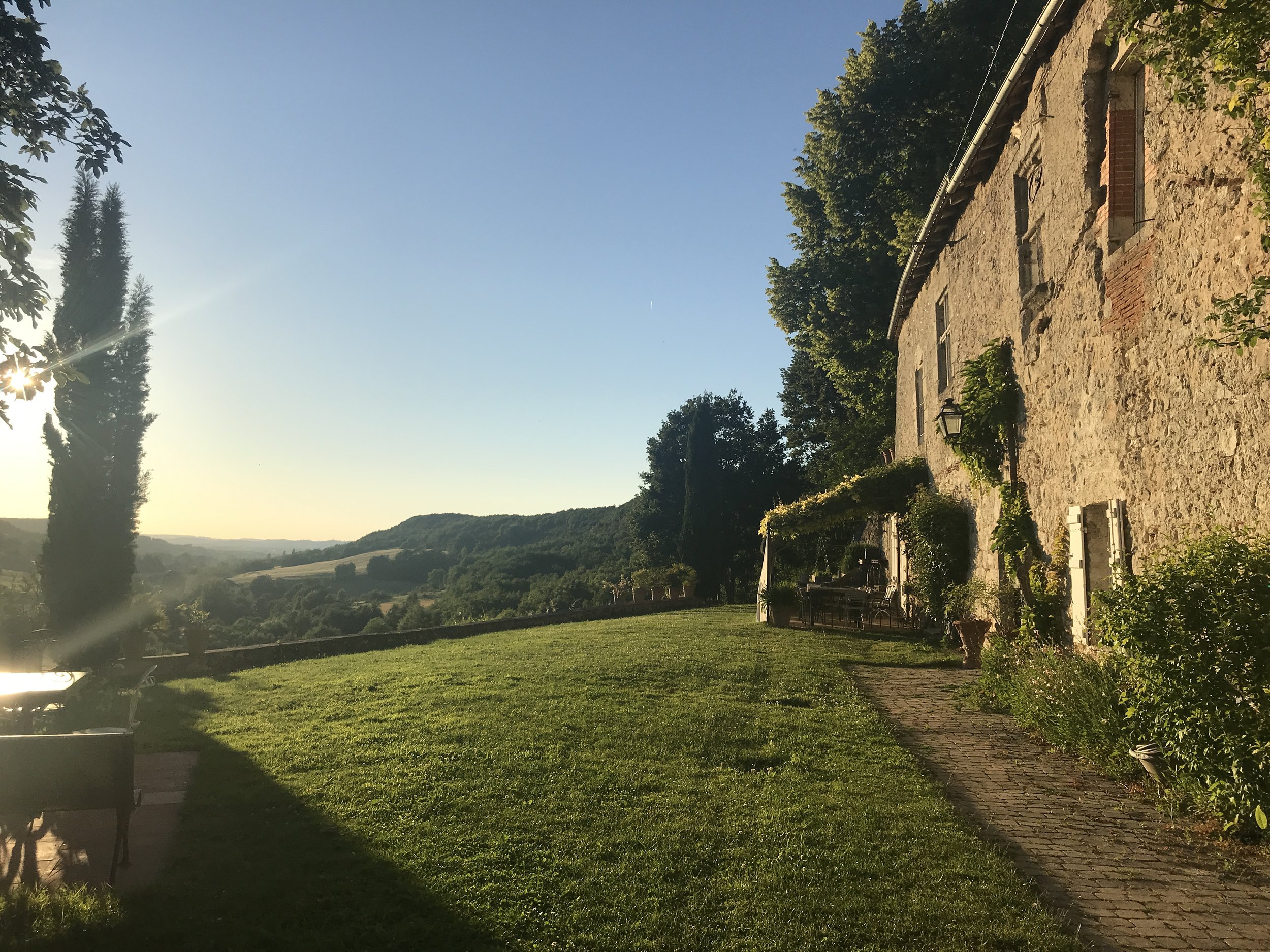What to do on a weekend on the north Norfolk coast
How is it possible that I’ve lived for nearly 60 years within easy driving distance of one of the country’s most stunning stretches of coastline and never been?
Apparently the beaches in Norfolk go on forever
My only defence is that my head was turned by the convenient accessibility of the south coast, and by the dramatic, craggy glories of the rugged shores of north Cornwall (which still rate as my all-time favourite UK seaside destination). Well, more fool me that it’s taken this long for me to discover the beautiful, sweeping swathes of beaches that line the north coast of Norfolk. And, indeed, the county’s gorgeous villages and towns, and the lovely, open countryside vistas.
Flint walls are a feature of many of the houses in the lovely villages we visited
Now I have, I’m delighted to be able to share my discoveries with you. And to take on the chin any amount of eye-rolling, and ‘about bloody time’ comments. You’re all absolutely right.
Our base for our revelatory weekend was a gorgeous Airbnb not far from Kings Lynn. Our delightful hosts, Philip and Gil, had only just opened the east wing of their beautiful, thatched roof 16th century home, Tudor Old Hall, to guests. We were lucky enough to be the first people to enjoy their impeccable decorating, luxurious but wonderfully comfortable furnishings, welcoming, homely touches (they have their own branded soap, shampoo and body lotion in the bathroom) and fabulous jacuzzi bath.
The open-plan living, dining and kitchen room in our beautifully decorated and furnished 16th century Airbnb
They also supplied us with loads of recommendations for places to see and eat, all of which were exactly as terrific as they promised they would be. In all honesty, this should be titled ‘Gil and Philip’s guide to the north Norfolk coast’.
We decided to head out to the furthest point we wanted to cover in the short time we had available and then work our way back along the coast towards where we were staying. I do realise that meant missing out on a huge swathe of both the coast and the countryside, but there’s only so much you can do in two and a half days.
Starting off at Blakeney
Our first stop was the quay at Blakeney, from where our plan was to walk what looked like a relatively short distance to the sea. Fooled by the fact that there were boats lined up along the channel of water alongside the quay car park, we assumed we could just walk straight out to the beach. What we didn’t know was the path we blithely set out on would meander through the marshes that lined the shore between the land and the sea, not only never getting any noticeably closer to the water but at one point plunging right back inland, through the pretty village of Cley, past its splendid windmill, and only finally reaching the shingle backed water’s edge two and a half miles later! (Nor did we realise there was a car park actually adjacent to the beach at that point. But let’s not mention that, other than to charitably give you the heads up. You’re welcome).
You can stay in the hotel at the windmill in Cley
Whilst it was a flat, easy walk offering wonderful uninterrupted views along the coast and a chance to explore a village we wouldn’t otherwise have seen, we chose to take the more direct route back to Blakeney along the road, which meant we could stop off for a wander round the peaceful, timber-roofed Gothic St Nicholas’s Church (though sadly not climb the 137 steps up its tower, which is only open from Monday to Friday from 9.30 to 5.30).
The tower was closed when we visited St Nicholas’ Church, so we didn’t get the chance to enjoy the views from the top
But we very much enjoyed wandering round the tranquil interior
The route also took us down the sloping main street of the town with its pretty flint cottages and lovely little independent shops, restaurants and cafes.
Blakeney is a National Trust nature reserve and there’s lots to do there which we didn’t have time for. Here’s where to find out more.
Our drive to our next stop took us through another pretty village - Wells by the Sea - and on along the coast to one of Norfolk’s most iconic beaches. There’s a reason Holkham regularly gets sited as one of the most beautiful beaches in the UK. The vast stretch of dune-backed sand revealed at low tide stretches literally as far as the eye can see in both directions. At high tide, the water swirls through a gap in the dunes to fill the semi-circular basin at the back of the beach to form a glorious, shallow lagoon. We arrived when the tide was out at its furthest point and the scale and beauty of the pristine beach was simply breathtaking.
Holkham Beach (the one in the shot at the beginning of this blog) stretches the full width (and a lot more) of the very back of this shot. In the nearer foreground is the area that becomes a lagoon at high tide.
The sunshine that had accompanied our first day sadly deserted us on day two. Rain clouds punctured the wide Norfolk skies, and we experienced first-hand the drawback of the flat, open countryside when it comes to affording any protection from the wind.
We headed back to Holkham but this time our plan was to explore 18th Century Holkham Hall, the still lived-in seat of the Earls of Leicester. The Palladian style house sits at the heart of a 25,000 estate, and the 3,000 acre grounds can be explored on foot (there are a variety of well signposted walking routes) or by bike, which was our choice of transport for our visit and which meant we could cover more of the wonderfully varied and beautifully maintained park.
Holkham Hall in one of the brief intervals between rain showers. The cycling was along well maintained paths. I’m just on the grass to get this shot!
It would take a full day (and possibly more) to see and do everything at Holkham Hall. The magnificent interiors of the house itself deserve at least an hour to appreciate. There’s a cleverly designed interactive farming exhibition called Field to Fork, a new 6 acre walled garden project to enjoy, boats and canoes to hire on the lake, a terrific woodland playground, a first rate cafe and, opening this summer, a new treetop rope walk. It all makes for a perfect destination for a family day out. You can find out everything you need to know on the excellent Holkham website.
Another day, another beach
We didn’t let the wind and rain deter us from our plan to experience another of the north coast’s beaches and one of Gil and Philip’s favourite spots to walk their bouncy fox terriers, Humphrey and Hattie. Thornham beach is a smaller scale version of the sandy sweep of Holkham (and by smaller I mean it only stretched nearly as far as the eye could see) and happily an also scaled-down version of the Blakeney coast path walk to access it. At Gil’s instruction, we parked at the harbour and followed the path along the saltmarshes and then across the dunes to the windswept beach beyond.
As much as we enjoyed being on the wet, windy beach, I can’t pretend it wasn’t a bit of a relief to make it back to the car and drive inland to another of Gil and Philip’s recommendations - the rather fabulous Thornham Deli. Although calling it a deli doesn’t fully do justice to what’s on offer inside it’s welcoming doors. There is, of course a deli counter with all kinds of tempting savoury and sweet treats on offer, fresh fruit and veg to choose from and shelves packed with a wide array of grocery items. Then are tables where you can sit and enjoy their dishes from their appetising menu. Some of those tables are in the cafe area, and others are dotted through the rest of the store where you can browse the stylish homeware, chic clothes and colourful children’s toys they also sell. Outside there are plants and garden ornaments for sale and more tables to sit at. See what I mean about it not just being a deli?
You can eat the delicious food at Thornham Deli literally surrounded by the stylish products on sale
Dragging ourselves away from Gil and Philip’s gorgeous home the next morning, we planned our route home to take in the last of their recommendations. The peaceful village of Castle Acre gets its name from the 12th century walled castle built there by the Normans. Today it’s a wonderfully well-preserved ruin where visitors are free to walk around what’s left of the great keep, tower gatehouse and , scramble over the ramparts and ditches and enjoy the sweeping views of the surrounding Norfolk countryside.
The view from the great tower of Castle Acre castle must have been quite something
But that’s not all. Because Castle Acre is also home to another astonishing historical treasure - one of the best preserved monastic sites in England. Magnificent Castle Acre Priory dates back to 1090 and was the home of the first Cluniac order of monks. There are more than enough of the buildings and their footprints to get a powerful impression of what the site must have looked like, and an excellent free audio guide is worth using, not just for the commentary on the buildings, but for the descriptions of what daily life was like for the monks who lived there.
The astonishing ruins of Castle Acre Priory give you a real sense of what living there must have been like for the Cluniac monks
Our culinary experiences during our stay in Norfolk were as enjoyable and satisfying as our touring ones. Dinner on our first night was at the excellent Market Bistro in Kings Lynn, where we could quite understand why the beautifully prepared seasonal British dishes has earned them a place in the Good Food Guide. High quality pub grub was on the menu at the Hare Arms on our second night, accompanied by peacocks casually strolling round the pretty exterior (as you do).
Heading home, I reflected that it may have shamefully taken nearly six decades for me to make it to Norfolk, but it would definitely be a lot less time before I go back.
I’d love to know if you have any recommendations for my next Norfolk visit
Other posts you’ll enjoy
A weekend away in the Cotswolds
Eight great reasons to visit Rye
My favourite seaside spots (before I visited Norfolk, that is!)


